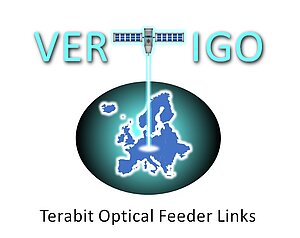January 28, 2020

The Fraunhofer Heinrich Hertz Institute HHI participates in the now officially launched project VERTIGO (Very High Throughput Satellite-Ground Optical link). The 3-year project is conducted through the Horizon2020 Research & Innovation program for the European Commission and aims to demonstrate concepts based on state-of-the-art optical technologies to significantly increase feeder link capacity.
VERTIGO will study the key enabling technologies for high throughput optical links (high opti-cal power generation, high-efficiency waveforms, atmospheric disturbance mitigation) and test them on the ground in both indoor and outdoor environments. The project is coordinated by Thales Alenia Space at the head of a consortium including CREONIC GmbH, ETH Zurich, Fraunhofer HHI, Gooch and Housego Ltd, LEO Space Photonics R&D, ONERA, Thales Alenia Space in France and Switzerland and Thales Research & Technology.
Within VERTIGO, the Fraunhofer HHI will develop optical antennas and communication tech-niques. Project manager Nicolas Perlot, head of the Free-Space Optical Systems Group in the Photonic Networks and Systems department at Fraunhofer HHI, explains: “Our antennas will make laser satellite up- and downlinks more robust to atmospheric impairments. We are looking forward to joining forces with the project partners.” Next-generation satellite sys-tems will play a major role in bridging the digital divide and delivering high-speed connectivity for all by 2025. Optical feeder links are considered as a very promising technology to en-hance significantly future VHTS (Very High Throughput Satellite) system performance. VER-TIGO will facilitate the development of VHTS systems and contribute to keep Europe at the cutting edge of technology, while honing industry competitiveness.
This project received funding from the European Union’s Horizon 2020 Research & Innovation program under grant agreement No. 822030.